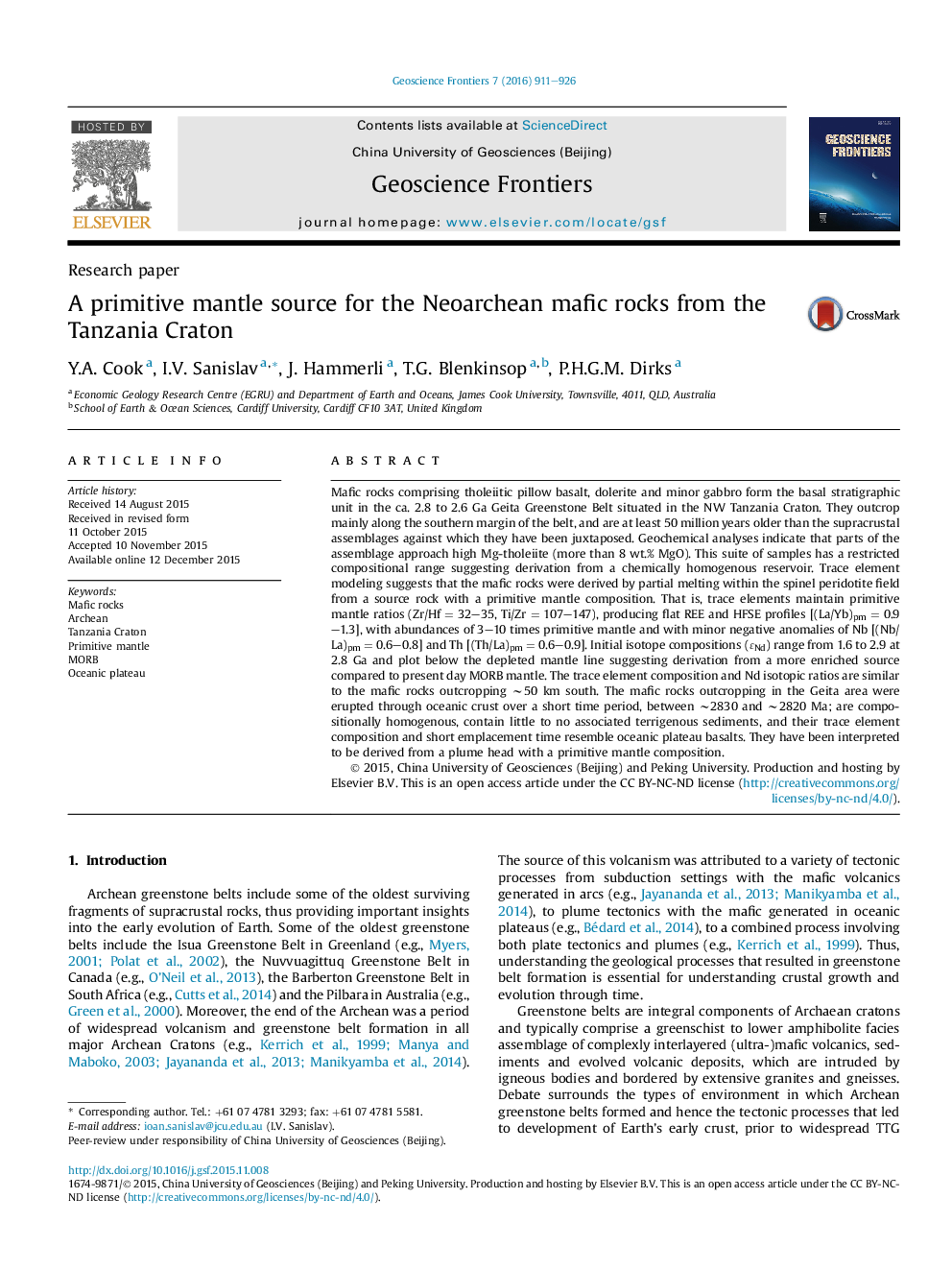| کد مقاله | کد نشریه | سال انتشار | مقاله انگلیسی | نسخه تمام متن |
|---|---|---|---|---|
| 4681449 | 1413816 | 2016 | 16 صفحه PDF | دانلود رایگان |
• ∼2820 Ma mafic volcanics were erupted on oceanic crust.
• They represent the oldest rocks in the northern Tanzania Craton.
• Their trace element geochemistry indicate a primitive mantle source.
• They were erupted in a basaltic plateau-like tectonic setting.
Mafic rocks comprising tholeiitic pillow basalt, dolerite and minor gabbro form the basal stratigraphic unit in the ca. 2.8 to 2.6 Ga Geita Greenstone Belt situated in the NW Tanzania Craton. They outcrop mainly along the southern margin of the belt, and are at least 50 million years older than the supracrustal assemblages against which they have been juxtaposed. Geochemical analyses indicate that parts of the assemblage approach high Mg-tholeiite (more than 8 wt.% MgO). This suite of samples has a restricted compositional range suggesting derivation from a chemically homogenous reservoir. Trace element modeling suggests that the mafic rocks were derived by partial melting within the spinel peridotite field from a source rock with a primitive mantle composition. That is, trace elements maintain primitive mantle ratios (Zr/Hf = 32–35, Ti/Zr = 107–147), producing flat REE and HFSE profiles [(La/Yb)pm = 0.9–1.3], with abundances of 3–10 times primitive mantle and with minor negative anomalies of Nb [(Nb/La)pm = 0.6–0.8] and Th [(Th/La)pm = 0.6–0.9]. Initial isotope compositions (ɛNd) range from 1.6 to 2.9 at 2.8 Ga and plot below the depleted mantle line suggesting derivation from a more enriched source compared to present day MORB mantle. The trace element composition and Nd isotopic ratios are similar to the mafic rocks outcropping ∼50 km south. The mafic rocks outcropping in the Geita area were erupted through oceanic crust over a short time period, between ∼2830 and ∼2820 Ma; are compositionally homogenous, contain little to no associated terrigenous sediments, and their trace element composition and short emplacement time resemble oceanic plateau basalts. They have been interpreted to be derived from a plume head with a primitive mantle composition.
Figure optionsDownload as PowerPoint slide
Journal: Geoscience Frontiers - Volume 7, Issue 6, November 2016, Pages 911–926
